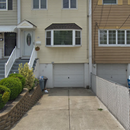Air-Sealing Front of House
I am having my siding/sheathing/soffits/flashing redone soon on the front of my town house (picture attached). From the scope of work they gave me, they will be adding insulation board( not sure if thickness) and tyvek paper over it. Not sure if they are taping seams of the insulation or the tyvek.
Anyway – my main question is, if it’s unknown how well air sealed the whole front wall structure will be, is it still worthwhile to ask them to air seal the bottom plate where the front foundation wall/wood framing meet with liquid applied membrane or a tape?
Should I also request taping on the tyvek or insulation to increase air tightness?
Note – the back is not being redone, just the front to address issues that are causing water to get into the unvented attic.
Thanks for any feedback!
Alex
GBA Detail Library
A collection of one thousand construction details organized by climate and house part










Replies
I would review your local building code first because that's what they're supposed to follow.
I suspect tyvek and/or foam will be taped. It's normal to tape housewrap.
Also remember the HOA is the client rather than you as the homeowner.
Appreciate the feedback - I'll have to double check what code we use here, maybe 2018 IRC. I'll have to see what they might say about taping to foam and or tyvek - but not sure if only those would air seal the bottom plate the same as a liquid applied or tape applied cover over the bottom plate, which is the main concern.
Also, for what it is worth, there is no HOA for these rowhouses, so I can make requests on that without worrying about that.
The IRC is pretty light on details. For example the Tyvek is considered the Water-resistive barrier required in Chapter 7 Wall Covering. However, the IRC only has requirements related to the installation of asphalt felt and then states "Other approved materials shall be installed in accordance with the water-resistive barrier manufacturer's installation instructions."
A lot of people don't realize how much of the building code is literally just "follow manufacturer's instructions". Last time I looked at house wrap installation instructions they were all calling for taped seams. Not sure off the top of my head what insulation board manufacturers call for.
I just confirmed with the company now - they do not tape the seams of either the tyvek or the insulation board by default, which is what I assumed since they had a fairly detailed scope of work breakdown that did not include either of those steps.
I inquired if they even have an option for doing the sill plate sealing with a tape or liquid applied membrane - and it sounds harsh, but I don't even know if it would be worthwhile if they don't have much experience doing it.
The insulation board will be thin, fanfold or something like it. Flashing details are critical, do some research.
Thanks for the feedback. They replied back that they don't by default tape the seams of the tyvek or the insulation board. I am slightly less worried about their flashing details since they laid out some of those on the scope of work they sent, but the taping seams/ air sealing the bottom plates weren't on there explicitly like the flashing details were.